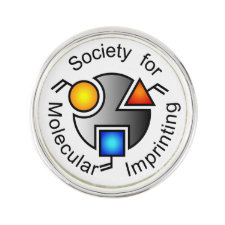
Authors: Xu ZF, Wu S, Wu XH, Kuang DZ, Zhang FX, Wang JQ
Article Title: Studies on the Preparation, Mechanism of Recognition and Binding Characteristic of Ferrocenecarboxylic Acid Imprinted Polymers.
Publication date: 2010
Journal: Chinese Journal of Applied Chemistry
Volume: 27
Issue: (4)
Page numbers: 384-389.
DOI: 10.3724/SP.J.1095.2010.90385
Alternative URL: http://yyhx.ciac.jl.cn/EN/abstract/abstract11558.shtml
Abstract: A series of ferrocenecarboxylic acid imprinted polymers from different functional monomers were prepared and their adsorption properties for the template were evaluated by equilibrium binding experiments. The results indicate that the imprinted polymer P1, prepared with methacrylic acid as the functional monomer, exhibited a higher selectivity for ferrocenecarboxylic acid. The specific binding capacity(Δ CP) and imprinting factor(IF) of P1 are 23.18 μmol/g and 2.33, respectively. The results of competitive binding experiments show that P1 can separate the template from its structural analogues. Scatchard analysis demonstrates that one equal class of binding sites was formed in the imprinted polymer in the studied concentration range. The dissociation constant and the apparent maximum number of the binding sites are 1.94 mmol/L and 92.33 μmol/g, respectively. The study suggests that the carboxyl of the template is the function group responsible for the formation of complementary interacting site in the polymer P1, and the double hydrogen bonds formed between the carboxyl groups of ferrocenecarboxylic acid and methacrylic acid are the main interactions in the recognition process.
Template and target information: ferrocenecarboxylic acid
Author keywords: molecular imprinting, Ferrocenecarboxylic acid, methacrylic acid, molecular recognition



Join the Society for Molecular Imprinting

New items RSS feed
Sign-up for e-mail updates:
Choose between receiving an occasional newsletter or more frequent e-mail alerts.
Click here to go to the sign-up page.
Is your name elemental or peptidic? Enter your name and find out by clicking either of the buttons below!
Other products you may like:
 MIPdatabase
MIPdatabase









